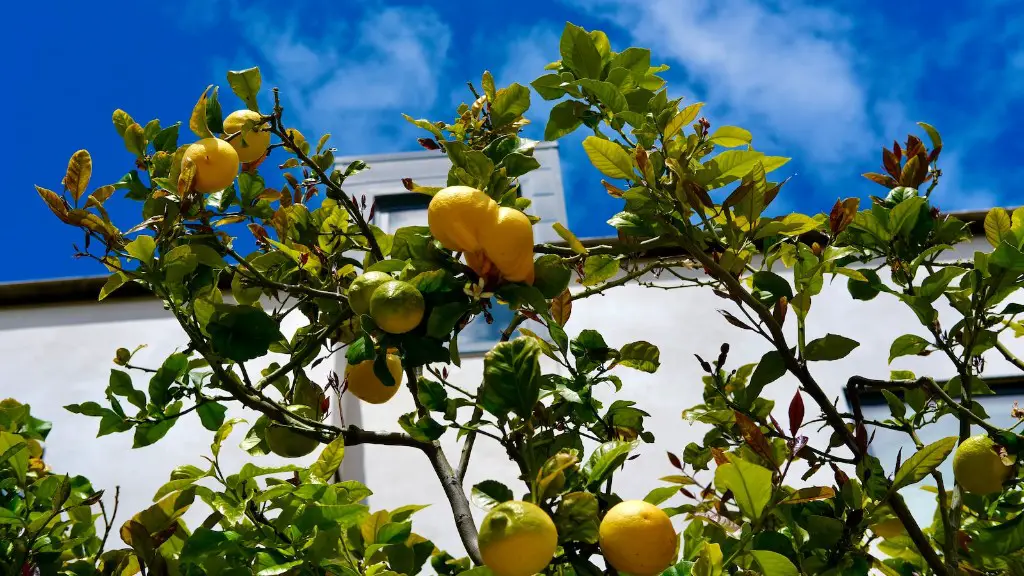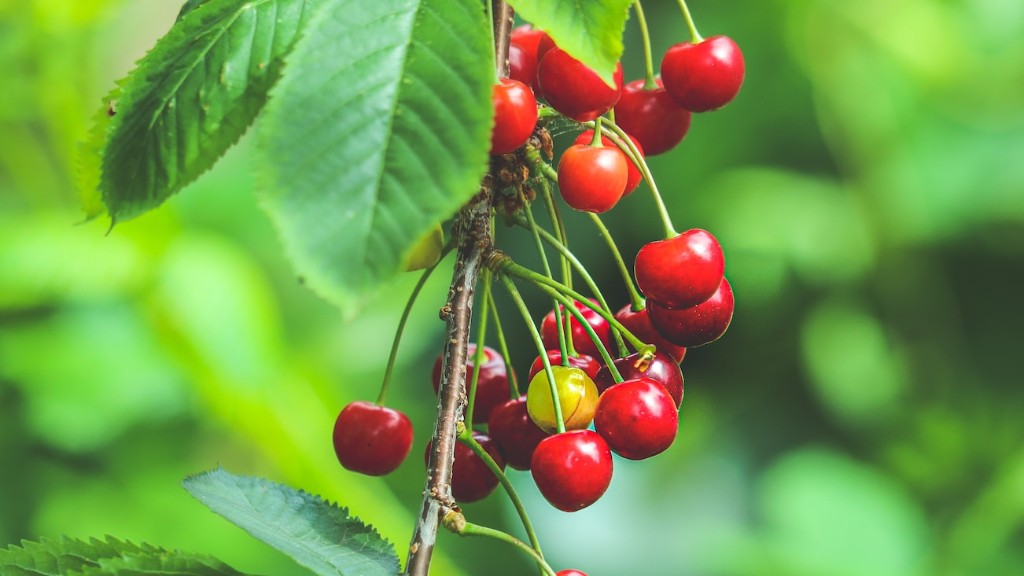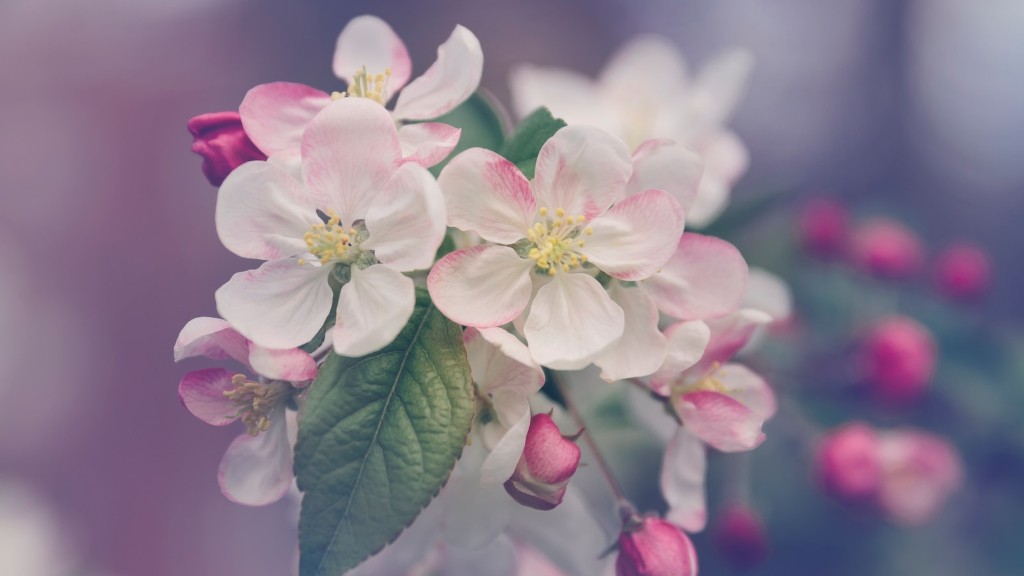Growing lemon trees indoors can be challenging, but it is well worth it. With careful consideration, proper temperature, lighting and fertilization, an indoor lemon tree can thrive and produce delicious fruit. Contrarily to belief, lemon trees can be grown successfully indoors. Growing a lemon tree is a long-term project, but it’s also a great way to bring fresh, delicious lemon flavor into the home.
Lemon trees require quite a bit of light to stay healthy, which makes them a bit tricky to grow indoors. Place the tree in a south-facing window to help ensure it gets the light it needs. An artificial grow light can also be used in areas without adequate sunshine. Also, make sure not to over-water the tree, as lemon trees are prone to root rot and other fungal diseases if they stay too wet.
When supplying water, aim to moisten the soil but not have it dripping wet. Reduce the amount of water in winter and start to increase it when active growth begins again in spring. The best way to check if the tree needs water is to feel the top inch of soil with your finger. Nature fertilizer can help provide the necessary nutrients.
Indoor lemon trees enjoy temperatures between 65 and 75 degrees. If the temperature drops below 60 degrees, the leaves will start to drop, and it could affect the fruit yield. To increase humidity levels and keep the lemon tree from drying out, keep a shallow, wide water tray near the plant.
In addition to the right temperature and lighting, lemon trees will require frequent pruning keeping the tree and its fruit easy to access. Pruning helps to shape the tree and encourage growth in other branches. When transporting a lemon tree indoors, examine the tree for pests and cover it with a cloth or bag until it is acclimatised in the location.
A big advantage of growing a lemon tree indoors is that they are much less likely to be affected by fungus and diseases than outdoor trees, so you get a healthier, more bug-resistant tree indoors. Whether you are an experienced gardener or just starting out, given the right conditions, patience and care, you can definitely have a healthy, productive lemon tree indoors.
Temperature Requirements
When growing a lemon tree indoors, you must ensure that the temperature stays within the ideal range. Lemon trees enjoy temperatures between 65 and 75 degrees. If temperature drops below 60 degrees, for instance, leaves might start to drop and the crop will suffer. If temperatures become too hot, the soil might dry out, though this is very unlikely in an indoor setting.
Not only the average daily temperature matters, but also the night temperature, as the lemon tree needs a period of at least 8 hours of darkness. To maintain a suitable temperature, keep the lemon tree away from air-conditioners, heating systems or vents. Additionally, avoid placing the lemon tree near doors or windows, as cold drafts can affect its health.
Light Requirements
Lemon trees need a lot of light and should preferably be placed in a south-facing window, since this orientation offers the highest light intensity and duration. Without sufficient sunlight, a lemon tree cannot photosynthesise and might start developing yellow leaves and poor growth. In areas without enough sunlight, an artificial grow light can provide the needed light.
A good rule of thumb is to provide the tree with 10 to 12 hours of light per day, which can either be natural or artificial. Having the lemon tree too close to the window can also be a problem. Glass tends to filter out certain wavelengths of light, so this needs to be taken into consideration when choosing a spot for the lemon tree.
Water Requirements
Under-watering and over-watering are two of the most common mistakes when it comes to taking care of lemon trees. Lemon trees should be watered regularly, but not too much. Aim to keep the soil moist but not soggy. Reduce the water in the winter and increase it again in the spring.
One way to see if the soil needs more water is to insert a finger in it. If the first inch of soil is dry and crumbly, the tree needs water. In addition, if the leaves of the lemon tree become yellow and start falling, it is an indication that the tree needs more water.
Fertilization Requirements
In order for the lemon tree to keep producing good yields, it needs to be fertilized every three months. You can use a fertilizer designed for citrus trees, following the instructions listed on the product. For maximum success, use a fertilizer rich in nitrogen, potassium, and phosphorous.
Aside from using fertilizer, you can apply Epsom salt. Epsom salt, which is a combination of sulfate and magnesium, can help the lemon tree absorb nutrients, yield more lemons, and grow bigger fruits. When applying Epsom salt, mix 1 tablespoon per 12-inch pot every 6 months and water the tree afterwards.
Pruning Requirements
Pruning is an absolute necessity when growing a lemon tree indoors. Pruning not only helps the tree look nicer, but it also helps the tree’s overall health by redirecting energy. When pruning, make sure to use sharp scissors and clean them between each cut with a solution of bleach or rubbing alcohol.
To prune the lemon tree properly, you should remove any weak or dead branches and tipping. Tipping is when you pinch the end of new growth in order to encourage side branching. Additionally, you can shake the branch lightly in order to help the lemon tree produce more fruits.
Harvesting Requirements
When it comes to harvesting lemons, many people make the mistake of leaving the lemon on the tree until it turns yellow. This is wrong and often leads to poor-tasting lemons. The optimal harvesting time is before the lemon turns yellow.
At best, lemons should be harvested when they are slightly green and firm. The optimal harvesting time depends on the variety of lemon tree, temperature, weather and other factors. In general, the lemons will turn yellow as they ripen in room temperature, as long as they are harvested when they are still sour.
Pest Control Requirements
Pests can pose a great risk for lemon trees and special care must be taken in order to reduce the risk of infestations. Before bringing a tree into the house, examine it closely for signs of pests or eggs. Control pests by applying natural insecticides. Finally, keep an eye on the lemon tree and prune any leaves that start showing signs of pests.
In addition to beetles and mites, aphids can also become a nuisance for lemon trees. If present, simply spray aphids off the leaves with a steady stream of water. You can also mix natural pesticide tea make out of rhubarb, garlic and onion and spray it on the leaves when needed.
Hygiene Requirements
Finally, proper hygiene is essential when taking care of lemon trees. Indoor lemon trees are much more prone to fungus and diseases if they are not kept in clean conditions. To keep your lemon tree healthy, make sure to periodically clean the leaves with a soft cloth and slightly soapy water.
Additionally, pruning tools should be kept clean at all times. After each pruning session, clean the scissors with a solution of warm water and vinegar. If the lemon tree is kept inside for the winter, it’s a good idea to spray it with insecticidal soap every few weeks in order to eliminate any insects that might be living on the tree.




